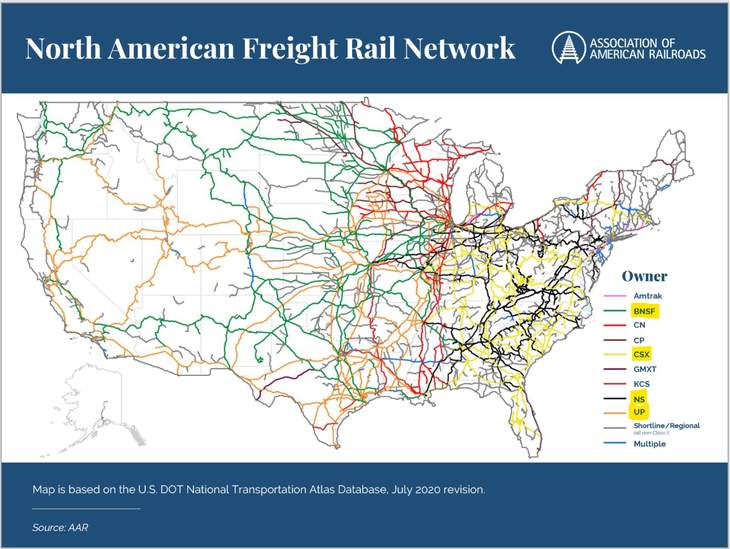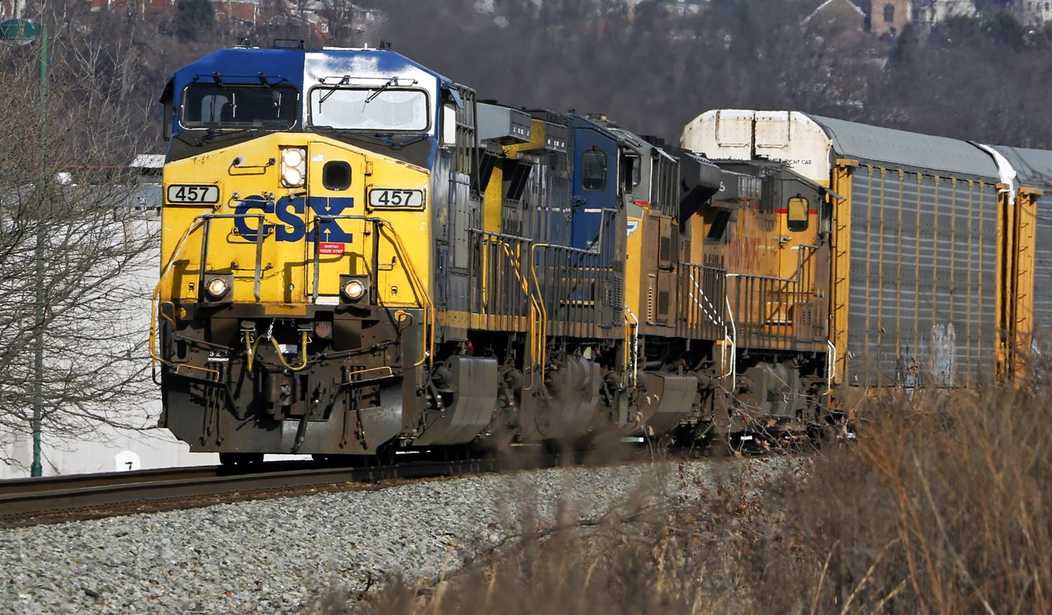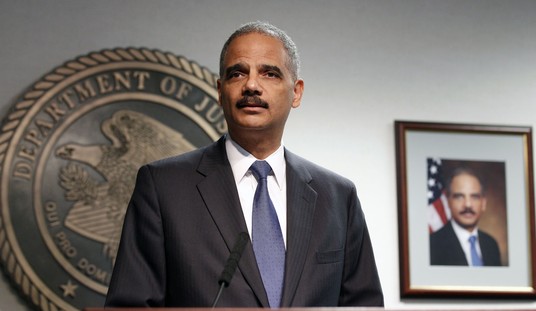Things are not looking so rosy for the old “most pro-union president” in our lifetime. After Biden’s premature victory party in September, admission of zero personal involvement in the intervening months, and his weak-kneed punt to Congress three days ago when push came to shove…
As a proud pro-labor President, I'm reluctant to override the ratification procedures and views of those who voted against the agreement.
But in this case – where the economic impact of a shutdown would hurt millions – I believe Congress must use its powers to adopt this deal.
— President Biden (@POTUS) November 29, 2022
…even as union members called it a “betrayal”…
…Michael Paul Lindsey, a locomotive engineer in Idaho and steering committee member for Railroad Workers United, told Insider it was a “blatant betrayal” but he wasn’t surprised.
…well. It’s a tough sell. So awkward, in fact, the French Lady had a whale of a time insisting that her boss is still that guy during a press conference.
Karine Jean-Pierre: "He sees himself as a pro-union president. That term has been GIVEN to him by labor." pic.twitter.com/qUCWCV6tRQ
— Daily Caller (@DailyCaller) November 30, 2022
RIIIGGGHHHTTT.
The sticking point over sick days reminds me a little of the song 7 1/2¢ from “The Pajama Game” – it’s the symbolic spot where everyone digs in. Ed brought up some really good points in his post last evening, including that fact that lots of smaller unions already have local agreements packed with sick leave and other really decent benefits. So a lot of this bluster would seem superfluous. Perhaps it’s a good measure pure theater meant for member consumption – that’s a given in these situations – as opposed to a must-have easing of intolerable conditions for all rail workers. To a certain extent, I wouldn’t doubt that’s at play.
I will tell you what I have learned from personal interactions. What I have found in conversations with rail workers and their families, which spontaneously happen any time I’ve gotten into a comment thread about the strike, etc., is the amount of resentment they all have, about what has happened in, and to, an occupation they all genuinely love. For generations of rail families, in many cases. It’s been really fascinating, and I have come to understand their side of the beef here a bit better than I normally would, as a confirmed non-union fan. Frankly, they’re pissed off.
It’s not money. It’s the quality of life.
Three words have changed the railroads, delivering up what we have today (and I will try not to count like POTUS): de-regulation and bean counters.
The first, de-regulation, happened in 1980 and the subsequent consolidation had profound effects on the rail system itself in the States.
… Class I railroads, defined by meeting an inflation adjusted annual revenue threshold, are the largest railroad freight carriers. (The Class I revenue threshold was approximately $350 million in 2006.) In 1980 there were 39 Class I railroads, with a four-firm concentration ratio of 35 percent. The Staggers Act facilitated the exit of failing firms. By 1987,17 Class I railroads remained, and the four-firm concentration had increased to 55 percent.
Mergers, declassification, and the Conrail breakup resulted in further industry consolidation in the 1990s…
By 2000, the industry was down to seven Class I railroads, with a four-firm concentration of about 90 percent. Taking geography into account, the industry had become a pair of regional duopolies, with the BNSF and Union Pacific being approximately equal-sized competitors in the western part of the country and similarly-sized CSX and Norfolk Southern competing in the east…
So, by a little over twenty years ago, just 7 were left standing. Four of the major railroads (and 90% of the business) operate two each in separate halves of the country, while the 3 smaller companies are scattered throughout. That is how it remains to this day. I’ve highlighted the four railroads on the map legend, and once you see their corresponding colors on the U.S. itself, you see how dominating they are.

The next blow was something dubbed PSR – Precision Scheduled Railroading – and where the bean counters came in. “Experts” began streamlining operations for maximizing profits in an industry that had already seen widespread lay-offs due to the consolidations.
…In 1980, at the dawn of rail deregulation, there were 40 Class I railroads. Today, there are just seven. Of those seven, four have 83 percent to 90 percent of the freight railroading market. Wall Street took notice of railroads’ growing market power and pushed them to implement PSR, which meant running faster, longer trains, and skimping on service, spare capacity, systemwide resilience, and safety. When Union Pacific closed Global 3, the railroad was implementing PSR.
Today, using PSR, railroad management’s job is to drive down the “operating ratio,” or operating expenses as a percentage of revenue. In other words, Wall Street judges railroads’ success based in part on spending less money running the railroad and more on stock buybacks or dividends. Theoretically, focusing on lowering operating ratios pushes railroads to be more efficient, to do more with less. But when railroads have the market power they have today, they can instead “do less with less,” as shippers and workers put it.
“Well,” you say, “That’s what business is for, right?” True, of course. But one also knows there is only so far one can push machines, people and luck when the necessary slack has been mercilessly carved out of the system. Railroad employees feel they have been used pretty badly in the name of efficiencies.
…PSR requires workers to be on call for up to two weeks, around the clock, and work shifts as long as 12 hours. Trains are now as long as 3 miles and often staffed by just two engineers, meaning lengthy hikes — and, often, associated blockades of roads and passenger trains — if there are any connection problems. No sick leave means people are coming into work with Covid or other illnesses. All that worsens the disruptions of constant travel associated with driving trains all over the country, making ordinary life stuff like going to the doctor difficult or impossible.
By spending as little as possible on labor and overhead, the companies raised profits. By leaving no slack in the freight rail system, with trains and operators both constantly working at full capacity, they ensured that any surge of demand would show up as higher profits instead of more shipping. Sure enough, that’s exactly what happened when the pandemic prompted a massive surge of rail shipping as people shifted spending from services to goods. But the surge in demand was so large that it created giant tangles in the freight system.
The workers don’t see the squeeze ending any time soon. In fact, portents lean towards it getting worse.
…More recently, the firings of nearly one-third of the workforce has changed the nature of the job for conductors and trainmen. A new attendance policy at BNSF Railway, owned by Warren Buffett’s Berkshire Hathaway, requires workers to stay on call for up to two weeks, able to be brought in to work at a moment’s notice. The policy, which is in place at other railroads, also penalizes workers for taking time off, up to and including termination.
Workday times have also increased to as much as 12 hours. The current CEO of BNSF, Katie Farmer, has called for one-person crews for trains, saying that “Railroad jobs, as most jobs, have always evolved over time.”
This is the president of one of the four largest railroads advocating for ONE (!) PERSON to be at the helm of, and the only living soul ON, a three mile long freight train. Who might have been called in at the last minute.
What could possibly go wrong?
If they’re not in danger of being laid off due to mergers or cost-cutting, conditions are driving rail workers from the industry, again making it ever so difficult for the remaining folks to cover the load. I read the other day where they’ve only managed to hire 1 new employee for every 18 who’ve walked. That’s unsustainable.

With yet more consolidation being brangled over…
…The STB also has Canadian Pacific Railroad’s $27 billion acquisition of Kansas City Southern to consider. The combination of Class I railroads would be the first major combination since the 1990s and lower the number of Class I railroads to six, further reducing the number of independent railroads that shippers and workers can choose between.
…more pressure from PSR regimens, zero give in the system, and this strike looming, it’s not a pretty picture on the rails right now. Ergo, not a pretty picture for the country at large.
With everything said and done, I do not know that the rail unions are prepared to make nice for their most “pro-union” POTUS.
…It is not enough to “share workers’ concerns.” A call to Congress to act immediately to pass legislation that adopts tentative agreements that exclude paid sick leave ignores the Railroad Workers’ concerns. It both denies Railroad Workers their right to strike while also denying them of the benefit they would likely otherwise obtain if they were not denied their right to strike.
Additionally, passing legislation to adopt tentative agreements that exclude paid sick leave for Railroad Workers will not address rail service issues. Rather, it will worsen supply chain issues and further sicken, infuriate, and disenfranchise Railroad Workers as they continue shouldering the burdens of the railroads’ mismanagement….
Maybe it’s a lucky thing for him he’s clueless after all, but it sure does gum it up for the rest of us.
And that’s my dive onto the other side of the tracks.








Join the conversation as a VIP Member